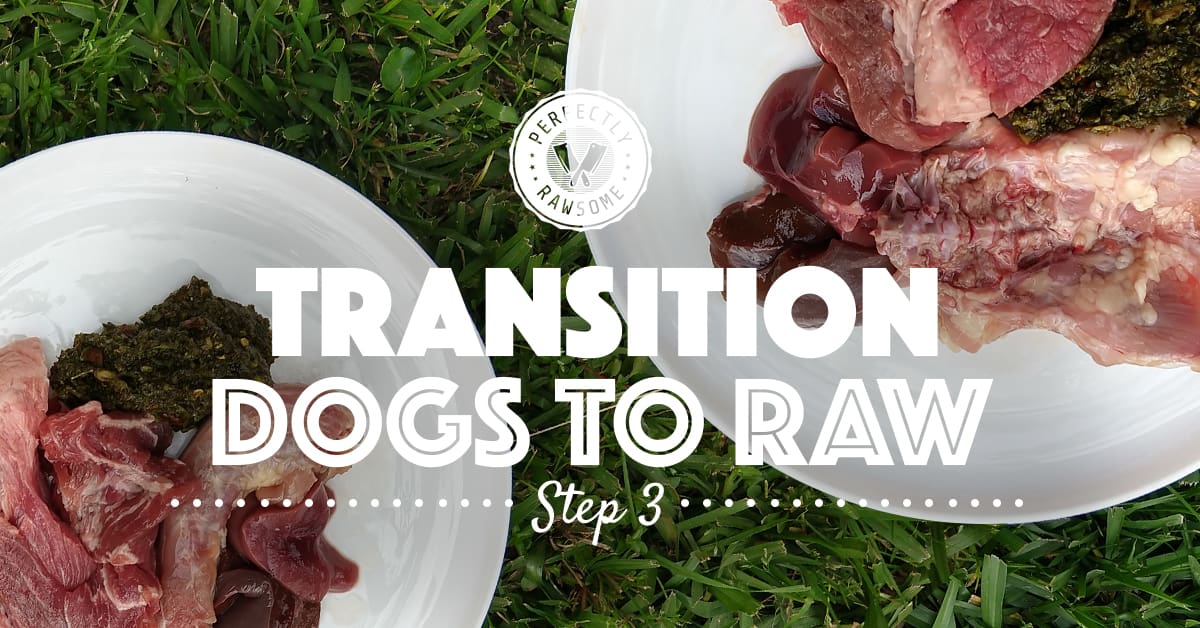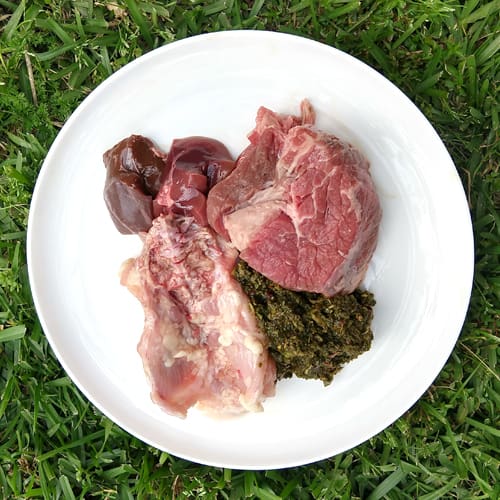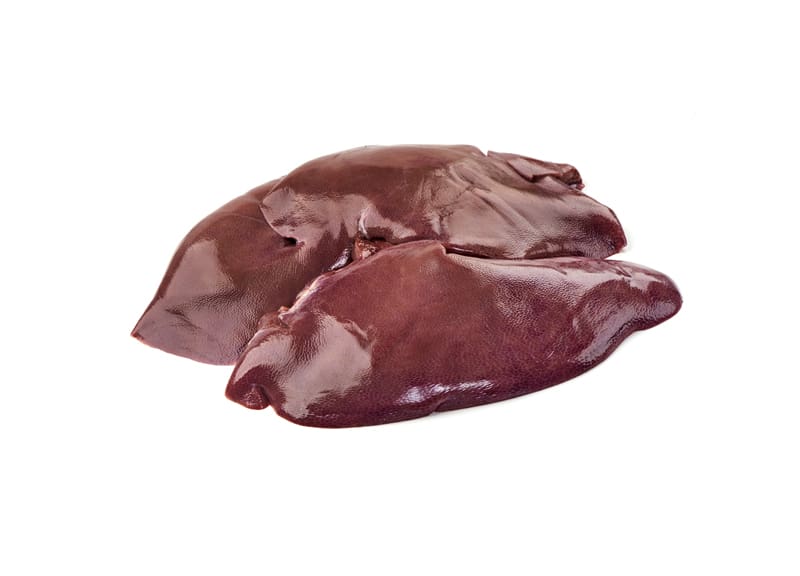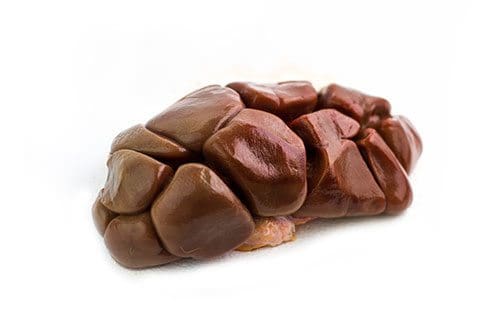Each step of the transition slowly progresses adult dogs to a raw diet. The third step of the raw feeding transition introduces liver and other secreting organs which provide important essential nutrients.
Secreting organs play an important role in raw diets. It is time to feed organs once a dog is successfully eating red muscle meat, raw meaty bones, and vegetables.
Continue Red Meat
Continue feeding the red muscle meat from step 2.
Raw Meaty Bones Remain Consistent
Continue feeding raw meaty bones from lean, white proteins.
Introduce Secreting Organs
Introduce liver and other secreting organs.
Decrease Fiber-Based Vegetables
Slightly decrease fiber based vegetables as organ ratios increase.
Don’t rush the transition process. It is normal to get excited and want to push forward. However, it is best to allow the dog to set the pace of the raw transition. Some dogs take easily to a raw diet while others will need a slower approach.

Adding Organs to a Raw Diet
The diet begins to align with raw diet ratios in step three of the raw feeding transition. Organs are introduced in step three to provide essential fat-soluble vitamins, water-soluble vitamins, and minerals.
Some dogs require more bone to maintain firm and consistent stool in comparison to others. The following ratios are starting guidelines – not rules. Therefore, this will require modification based on each dog’s individual needs.
Organs are quite rich and may cause loose stool if overfed. Sensitive dogs may need to begin with half of the normal organ ratio and increase the amounts slowly.

Small Dog Meal Example
Pork Muscle Meat
Chicken Neck
Beef Liver
Beef Kidney
Veggie Blend

Large Dog Meal Example
Beef Muscle Meat
Chicken Back
Beef Liver
Beef Kidney
Veggie Blend
Secreting Organ Options
The red muscle meat, raw meaty bones, and vegetables in step three should remain the same ingredients as in step two. Step three of the raw transition is meant to introduce liver and secreting organs, which increases the available nutrients of the meals.
Secreting organs are nutrient-dense, so a little goes a long way! They are high in fat-soluble vitamins, water-soluble vitamins, and minerals in comparison to other ingredients. This makes secreting organs an ideal food to include in raw diets to ensure essential nutrients are met.

Raw Liver
Liver is the first secreting organ to introduce in step three of the transition process. Out of all the organ options, raw liver is strongly recommended to include in raw diets. Liver includes a high concentration of the essential nutrient, Vitamin A, and is a good source of minerals such as copper and iron.
Liver from different animal species will yield different nutrient levels. On average, beef liver and chicken liver are the easiest options to source in supermarkets. Beef or other ruminant liver is an ideal choice to provide essential copper.

Raw Kidney
Other secreting organs are introduced in step three following the introduction of liver. Secreting organs are beneficial in providing additional essential nutrients that raw liver does not provide. Raw secreting organs, particularly kidneys, provide every B vitamin in substantial amounts and is an excellent source of certain minerals like selenium.
Different secreting organs from various animal species will yield varying nutrient levels. On average, beef kidney and pork kidney are the easiest other organ options to source in ethnic markets.
Sourcing Ingredients
The availability of secreting organs will vary regionally. Raw liver is generally the easiest to source out of all organ options. Adding liver to raw diets is highly encouraged to ensure Vitamin A and Copper requirements are met. Other organs, such as kidneys, are not always required but can be beneficial to ensuring all B vitamins are met in a raw diet.
Calculate Ingredient Amounts
It is recommended to slowly introduce secreting organs in step three of the transition process. A slow introduction is a proactive measure to prevent gastrointestinal (GI) upset.
Step three is not intended or recommended to feed long-term.
The third step of the raw feeding transition is not complete with all essential nutrients and should not be fed long-term. The final step is to balance the diet with all essential nutrients through appropriate whole foods.
CLOSING COMMENTS
Step three of the raw feeding transition is designed to introduce adult dogs to secreting organs. Transitioning a dog to raw is exciting, but it is best to allow the dog to set the pace.
Past Ingredients
Continue feeding the same red muscle meat, raw meaty bones, and vegetables from step two. Ingredient variety will come once the dog is fully transitioned to a raw diet.
Raw Liver
Step three introduces liver to increase the nutritional value of the raw diet. Start with adding 2.5% liver to the diet and increase to 5% when the dog’s stool is firm and consistent.
Other Organs
Once liver has been fully introduced and is tolerated well, start with adding 2.5% other organs to the diet. Increase to 5% when the dog’s stool is firm and consistent.
